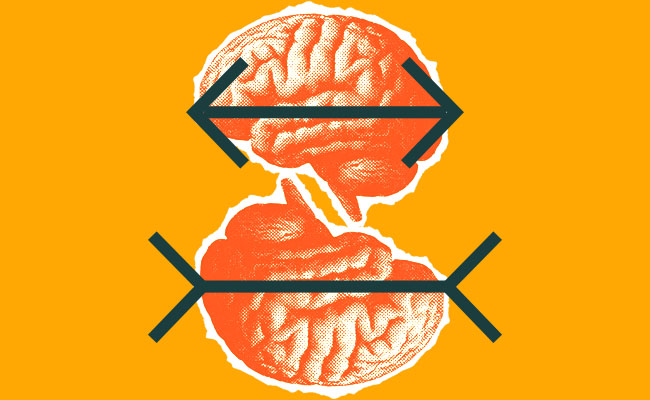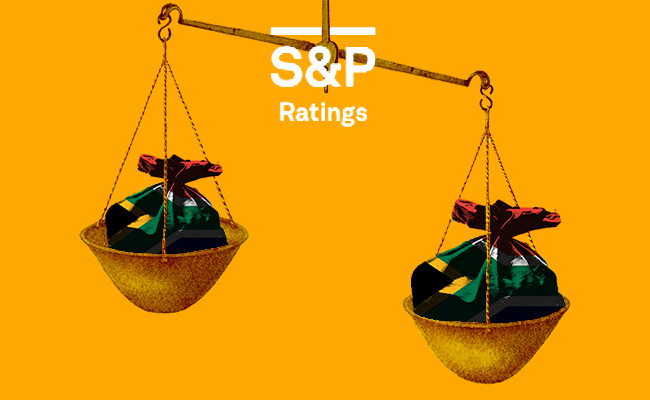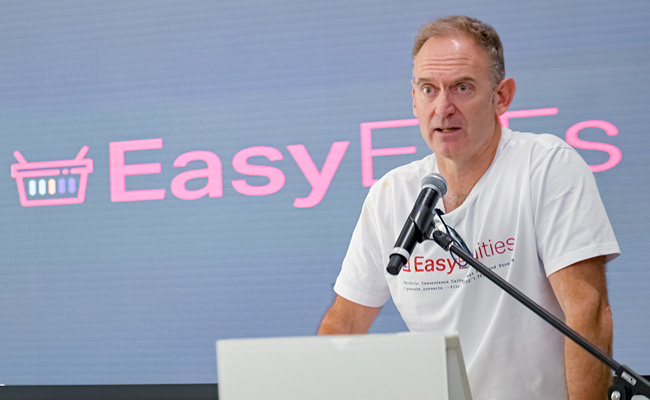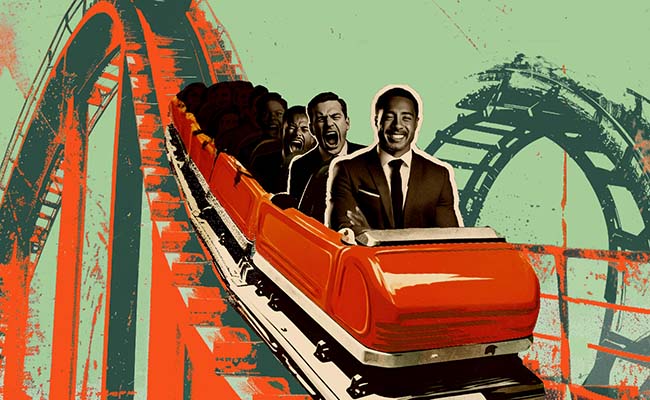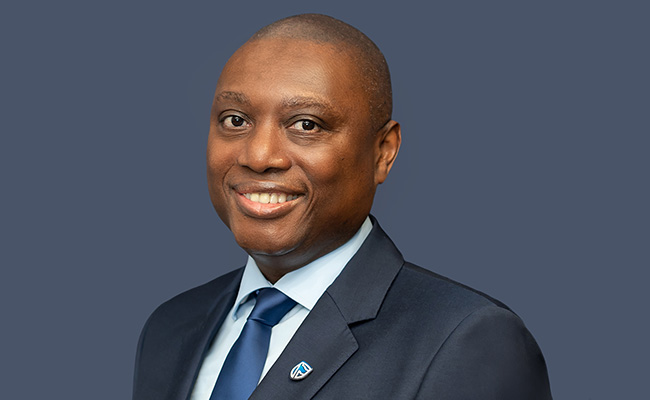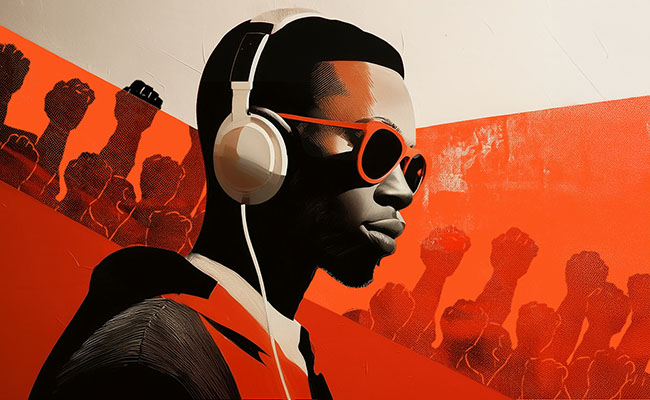Have you ever looked at one of those classic optical illusions and been fooled, even when you know the trick? The Müller-Lyer illusion, for example, shows two lines of equal length, but your eyes insist one is longer. Even after you’ve measured it with a ruler, your brain still whispers: “No, the bottom one really is longer.”
That stubborn tug-of-war is exactly what happens in investing. One part of our brain knows the sensible thing to do. Another part screams something completely different, and usually louder.
Meet your two brains
Psychologists have long described the mind as working in two modes. Daniel Kahneman popularised this way of thinking in his book Thinking, Fast and Slow, which brought decades of research on decision-making into the mainstream:
- System 1: fast, intuitive, emotional. It is always on, scanning the world for threats and opportunities. Brilliant for survival.
- System 2: slower, deliberate, effortful. It can weigh evidence, crunch numbers, and plan ahead, but only if we give it time and energy.
Both systems are essential. The challenge in investing is that the quick and emotional System 1 often calls the shots, while the slower, more effortful System 2 tends to arrive late. We are also often unwilling to give it the energy it needs.
Kahneman gives a vivid illustration: ask someone to solve a tough arithmetic problem while walking, and watch them stop dead in their tracks to think. We can walk and chew gum at the same time, but walking and overriding System 1 takes effort.
Why instincts trip us up
When share prices tumble, your gut says: “Get out before it gets worse!” That is System 1 doing its job, protecting you from perceived danger. But selling in a panic usually locks in losses, just when patience is most needed.
When markets soar, System 1 says: “Everyone else is making money, I’ll miss out if I don’t join in.” That is fear of missing out, another survival instinct hijacked by modern finance. Again, it feels safe in the moment, but often means buying high.
System 1 is not “wrong”. In fact, it is vital for everyday life. But the instincts that once kept our ancestors alive are the same ones nudging us to buy high and sell low today.
A personal moment of conflict
I remember vividly the days of the 2008 financial crisis. Every headline screamed catastrophe. Markets were falling daily.
System 1 was shouting at me too: “Sit this out. Don’t risk it. Cash is safer.” And truth be told, for years before that I had let System 1 win far too often, leaving too much of my own money uninvested.
But I had also spent years studying and teaching behavioural finance. I knew that System 2 had the better answer: staying invested is the only way to capture the long-term rewards of markets.
It was not easy. It never feels easy. But recognising which “brain” was speaking made it possible to ignore the screaming instincts and act on the quieter, effortful part of me. That October, I finally got fully invested, not because it felt comfortable, but because I realised that comfort was the trap.
How to give System 2 a fighting chance
The trick is not to silence System 1, which is impossible. It is to give System 2 enough time and space to weigh in before System 1 drives us into costly action. Here are five practical tools that help:
1. The 48-hour rule
Commit to waiting two days before acting on any big investment decision. Emotions are often at their loudest in the heat of the moment. A short pause allows them to settle, so System 2 has room to think. If you feel an overwhelming urge to sell, diarise a decision for 48 hours later. Chances are that the panic will have softened and the decision will look different.
2. Checklists
Pilots use them before every flight, even though they know the steps by heart. Investors can benefit from the same discipline. A checklist might include questions like: “Am I reacting to headlines? Am I comparing myself to others? Does this fit my long-term plan?” Writing it down forces you to slow down, and reviewing the answers often reveals that the urge to act is more emotional than financial.
3. Pre-commitments
Decide in advance how often you will review your portfolio, and stick to it. Once a quarter is usually enough. Looking too often only fuels anxiety. The more you watch your portfolio, the more you will see short-term losses (even in a long-term rising market), and the more likely System 1 is to take over. Pre-committing to a sensible rhythm keeps you from being dragged into unnecessary trades.
4. Play pots
For those who cannot resist the urge to tinker, carve out a small “play pot” of perhaps 5%-10% of your portfolio for speculative trades or personal experiments. This scratches the itch without derailing the core of your portfolio. Crucially, you must set clear boundaries: once the pot is spent, it is spent. This way you protect the bulk of your wealth while giving System 1 a safe outlet.
5. Decision buddies
Talk your decision through with someone you trust, whether a friend, adviser, or even just writing it out as if you had to explain it to someone else. Saying a decision out loud or committing it to paper activates System 2, because you have to justify it. It slows you down, forces you to think, and often exposes the emotional impulse behind the decision.
These five tools do not eliminate emotion. They simply slow the process down just enough for System 2 to be heard.
The takeaway
Investing success does not require superhuman intelligence or perfect foresight. It requires recognising that we all have two brains, one fast and emotional, the other slower and effortful, and learning how to stop the fast one from running the show.
The challenge is that System 2 takes work, and most of us are wired to avoid effort if we can. Making better decisions is not easy. But it is worth it.
The good news is that with a few simple habits and guardrails, like the ones above, you can protect yourself from your own instincts. You do not need to suppress your emotions. You just need to structure your decisions in a way that lets your slower, more effortful brain have its say before acting.
Investors who learn to do this will make fewer rash trades, sit more comfortably through downturns, and capture more of the long-term returns that markets deliver.
Greg B Davies founded and led the first behavioural finance team in banking globally in 2006, serving as Barclays’ global head of behavioural quant finance for a decade. Since 2017, he has led behavioural innovation at fintech Oxford Risk, developing behavioural technology to enhance financial decision-making. He holds a PhD in behavioural decision theory from Cambridge University and is co-author of ‘Behavioral Investment Management’.
If you’d like to go deeper into the tools and techniques that help investors harness their two brains, you can take his online course: The Art of Behavioural Investing. It is CPD-accredited, and designed for individual investors and advisers alike.
Top image: Rawpixel/Currency collage.
Sign up to Currency’s weekly newsletters to receive your own bulletin of weekday news and weekend treats. Register here.



